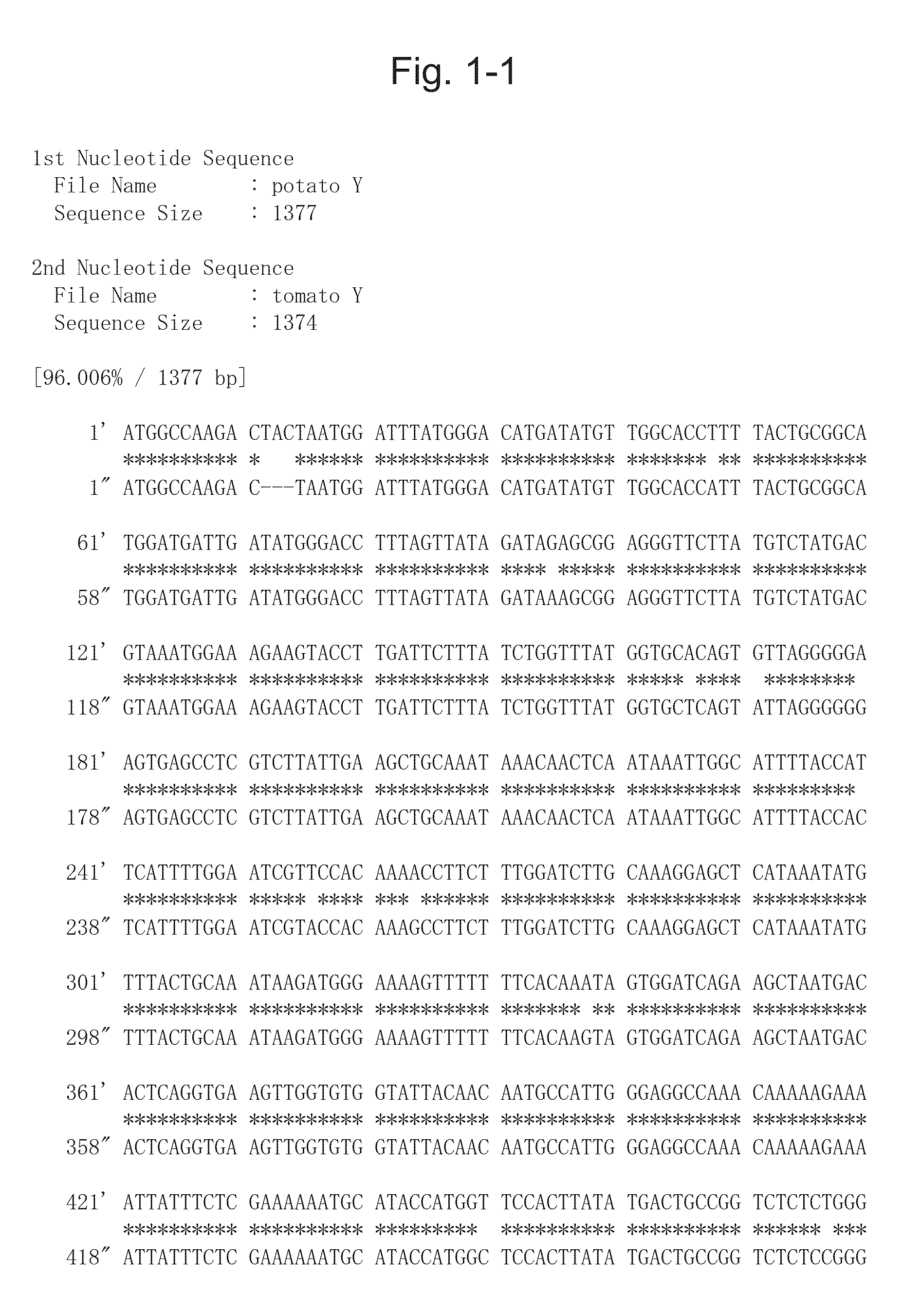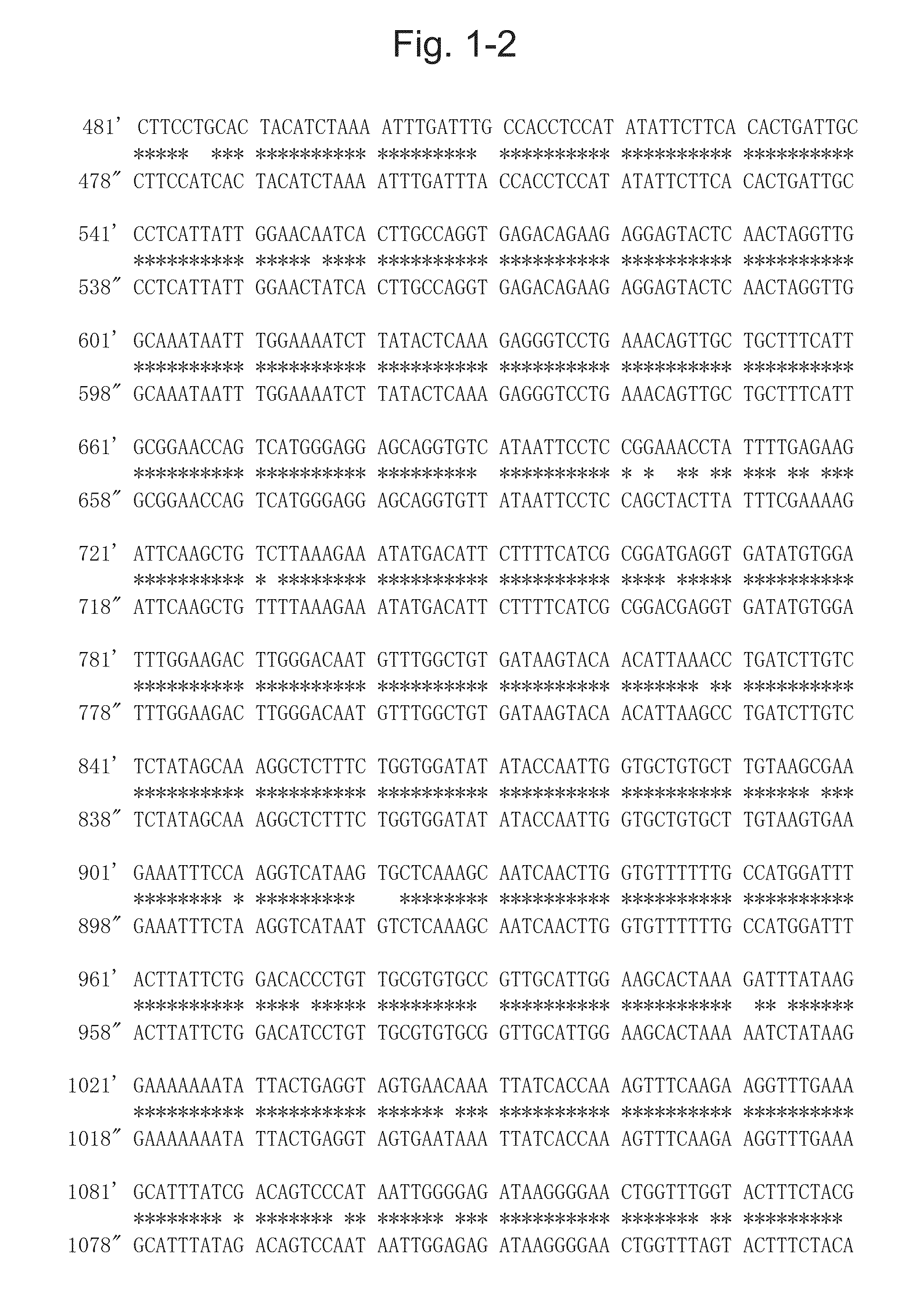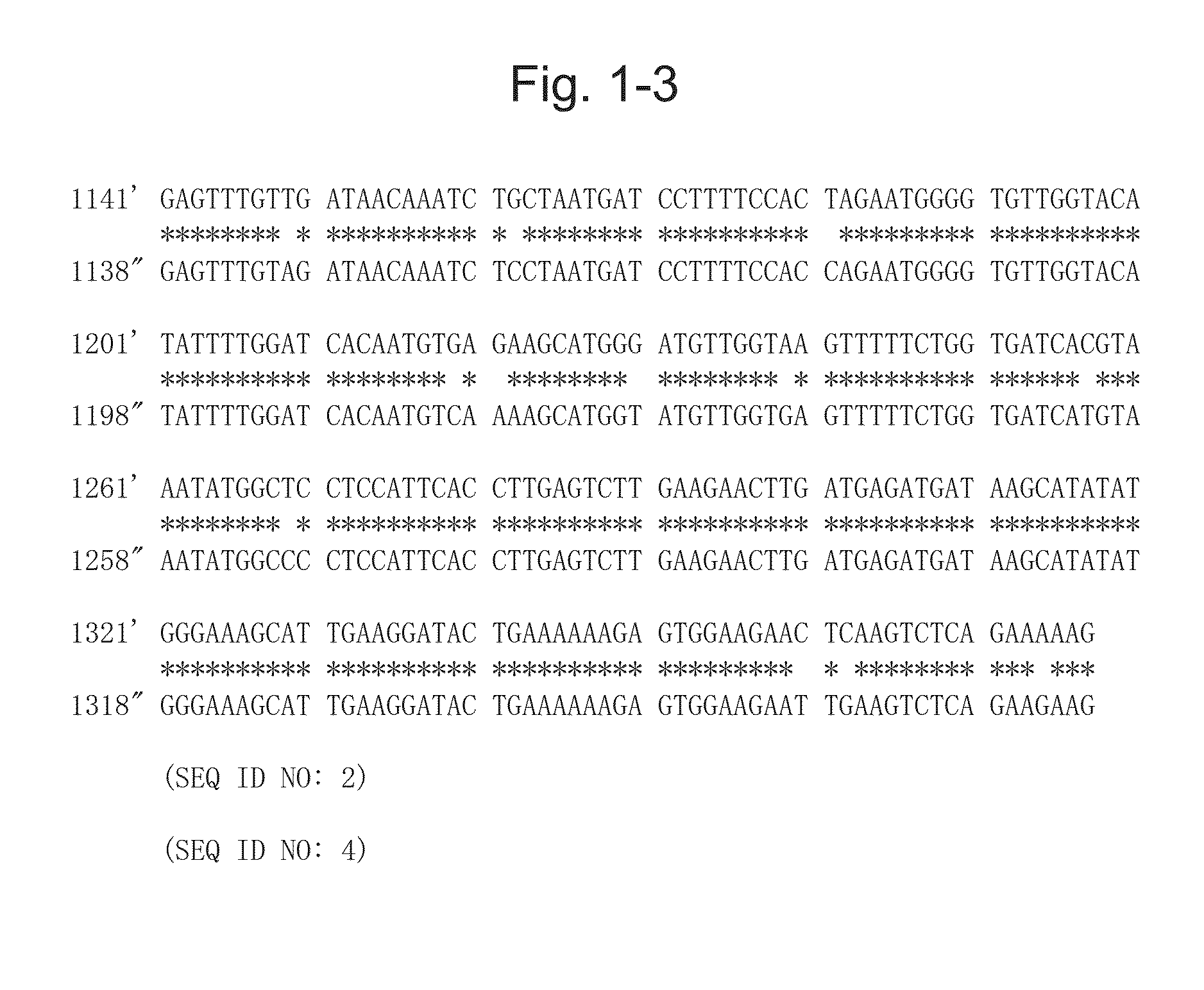Protein having glycoalkaloid biosynthetic enzyme activity and gene encoding the same
a glycoalkaloid and biosynthetic enzyme technology, applied in the direction of peptide sources, transferases, enzymology, etc., can solve the problems of reducing glycoalkaloids in potatoes, not being able to achieve research and development on suppressing metabolites or efficient production thereof, and achieving low cost and large production.
- Summary
- Abstract
- Description
- Claims
- Application Information
AI Technical Summary
Benefits of technology
Problems solved by technology
Method used
Image
Examples
example 1
Acquisition of Full-Length Sequence of Glycoalkaloid Biosynthesis Candidate Gene Y
[0093]mRNA was extracted from the sprout of the potato (Solanum tuberosum) variety “Sassy” using RNeasy (manufactured by QIAGEN). Total cDNA was synthesized using SuperScript First-Strand System (manufactured by Invitrogen). Recently, Oyama et al. (Proceedings of the 28th Annual Meeting of the Japanese Society for Plant Cell and Molecular Biology (Sendai) (2010) p. 165) have shown that the introduction of an amino group into glycoalkaloid proceeds via an aldehyde form at position 26. It is expected that the amino transferase is involved in the transfer reaction of the amino group to the aldehyde form, but any similar reaction is not known at all. Hence, the gene pAMT encoding the enzyme catalyzing the vanillylamine from vanillin having a completely different structure in capsicum in the same Solanaceae was set as the reference (Lang et al., Plant J. (2009) 59: 953-961). The unigene registered in the So...
example 2
Identification of Genomic Gene of Glycoalkaloid Biosynthesis Candidate Gene Y
[0096]The genome sequence of the potato gene (Xu et al., Nature (2011) 475: 189-197) has been recently reported. The genome sequence is open to the public in HP (http: / / potatogenomics.plantbiology.msu.edu / index.html) of the Potato Genome Sequencing Consortium Data Release. It is possible to determine the genomic gene of Y based on this sequence.
[0097]Three genomic structures of the genomic sequence of the tomato gene are also listed in the Solanaceae Genome Network as SL1.00sc03540, SL2.31ch12, and SL2.40ch12, and it has been reported that the genomic sequence of the tomato gene includes 16 introns. However, the function thereof is not reported at all in the website.
example 3
Construction of Vector for Creating Suppression Transformant of Glycoalkaloid Biosynthesis Candidate Gene Y
[0098]As a method of suppressing the gene by transformation, the expression (commonly referred to as the RNAi method in plants) of the complementary strand gene fragment in the reverse direction having a structure driven by a strong promoter was used [Chuang and Meyerowitz, Proc. Natl. Acad. Sci. USA., 97, 4985-90 (2000), and Wesley et al., Plant J., 27, 581-90 (2001)]. The gene was amplified with respect to the full-length cDNA obtained in Example 1 by a PCR (30 cycles, using ExTaq DNA Polymerase manufactured by TAKARA BIO INC.) at an annealing temperature of 55° C. using a primer [U895: GAGCTCTAGATATTTGATTTGCCACCTCCAT (SEQ ID NO: 7), and U896: GGATCCATATGCTTACAAGCACAGCACCAA (SEQ ID NO: 8)]. This was cloned into the pCR4-TOPO vector (manufactured by Invitrogen) to acquire the gene fragment. The pKT250 vector for plant transformation (FIG. 2) was created by performing the ligat...
PUM
| Property | Measurement | Unit |
|---|---|---|
| temperature | aaaaa | aaaaa |
| pH | aaaaa | aaaaa |
| weight | aaaaa | aaaaa |
Abstract
Description
Claims
Application Information
 Login to View More
Login to View More - R&D
- Intellectual Property
- Life Sciences
- Materials
- Tech Scout
- Unparalleled Data Quality
- Higher Quality Content
- 60% Fewer Hallucinations
Browse by: Latest US Patents, China's latest patents, Technical Efficacy Thesaurus, Application Domain, Technology Topic, Popular Technical Reports.
© 2025 PatSnap. All rights reserved.Legal|Privacy policy|Modern Slavery Act Transparency Statement|Sitemap|About US| Contact US: help@patsnap.com



